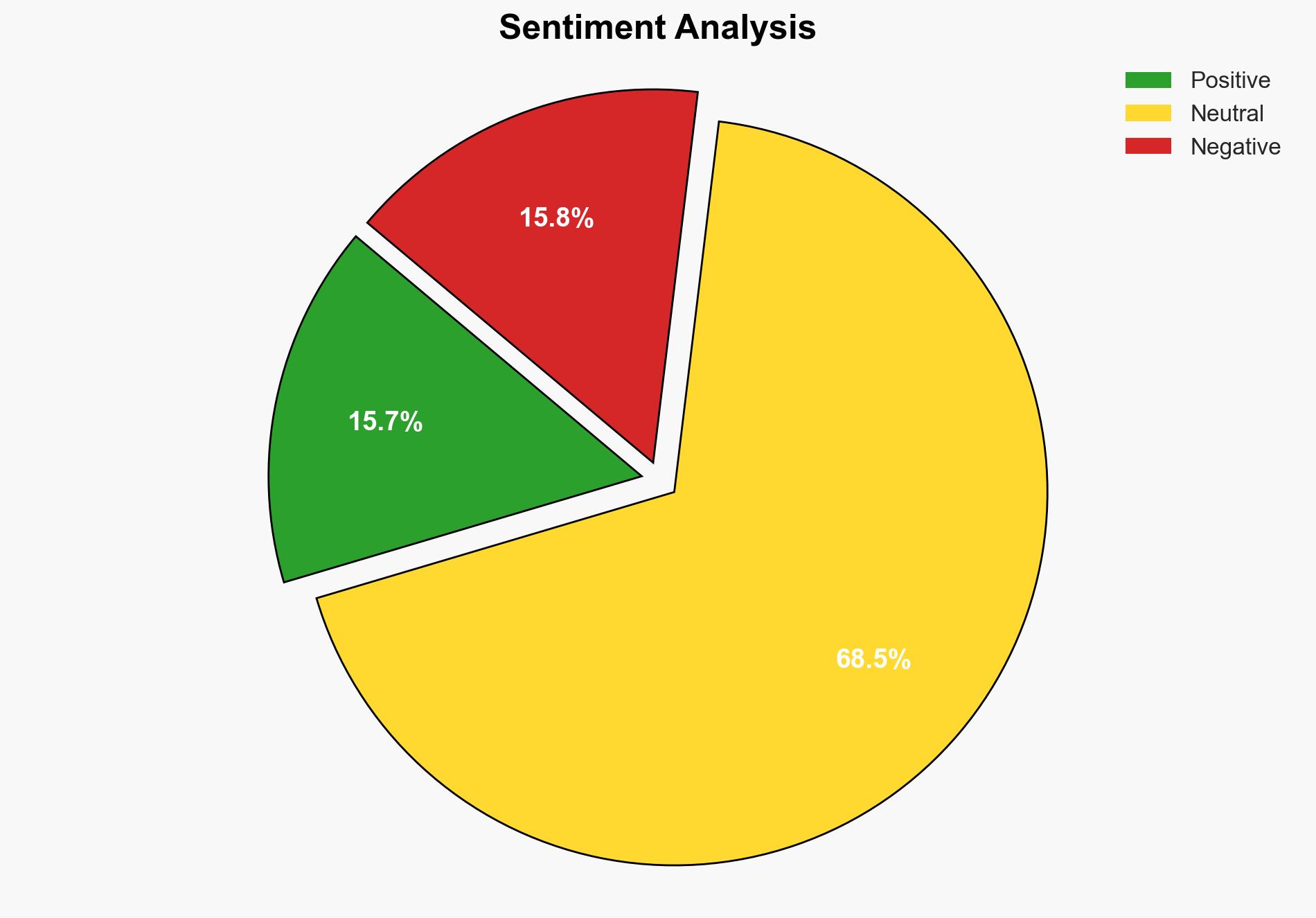China-linked APT Silk Typhoon targets IT Supply Chain – Securityaffairs.com
Published on: 2025-03-05
Intelligence Report: China-linked APT Silk Typhoon targets IT Supply Chain – Securityaffairs.com
1. BLUF (Bottom Line Up Front)
The China-linked Advanced Persistent Threat (APT) group, Silk Typhoon, has shifted tactics to target IT supply chains, focusing on remote management tools and cloud applications for initial access. This group is involved in cyber espionage, exploiting vulnerabilities in Microsoft cloud services to escalate privileges and steal credentials. Their activities pose significant risks to multiple sectors worldwide, including technology, healthcare, legal services, and government organizations. Immediate action is required to mitigate these threats and enhance security defenses.
2. Detailed Analysis
The following structured analytic techniques have been applied for this analysis:
SWOT Analysis
Strengths: Silk Typhoon demonstrates deep knowledge of cloud environments, enabling lateral movement and persistence.
Weaknesses: Reliance on known vulnerabilities and compromised devices for network activity.
Opportunities: The group’s ability to exploit unpatched applications and compromised credentials.
Threats: Potential for widespread data exfiltration and espionage impacting critical infrastructure.
Cross-Impact Matrix
Silk Typhoon’s activities in the IT supply chain could destabilize regional security by compromising critical infrastructure, leading to potential economic disruptions. Neighboring regions might experience increased cyber threats as the group expands its reach.
Scenario Generation
Best-case scenario: Enhanced security measures and international cooperation successfully disrupt Silk Typhoon’s operations.
Worst-case scenario: Unchecked, the group continues to exploit vulnerabilities, leading to significant data breaches and geopolitical tensions.
Most likely scenario: Continued targeting of IT supply chains with periodic disruptions but no major escalation.
3. Implications and Strategic Risks
Silk Typhoon’s activities pose significant risks to national security and economic interests. The group’s ability to exploit IT supply chains could lead to widespread data breaches, affecting critical sectors such as healthcare, defense, and government operations. The potential for geopolitical tensions and economic disruptions is high if these threats are not adequately addressed.
4. Recommendations and Outlook
Recommendations:
- Enhance cybersecurity measures across all sectors, focusing on patch management and credential protection.
- Foster international cooperation to share threat intelligence and coordinate responses to cyber threats.
- Implement regulatory changes to mandate stronger security protocols in IT supply chains.
Outlook:
Best-case: Improved defenses and international collaboration lead to a significant reduction in Silk Typhoon’s activities.
Worst-case: Continued exploitation of vulnerabilities results in major data breaches and geopolitical instability.
Most likely: Ongoing threats with periodic disruptions, requiring constant vigilance and adaptation of security measures.
5. Key Individuals and Entities
The report mentions significant individuals and organizations involved in the Silk Typhoon activities. These include Microsoft and entities within the IT supply chain, such as remote monitoring and management companies and managed service providers.





